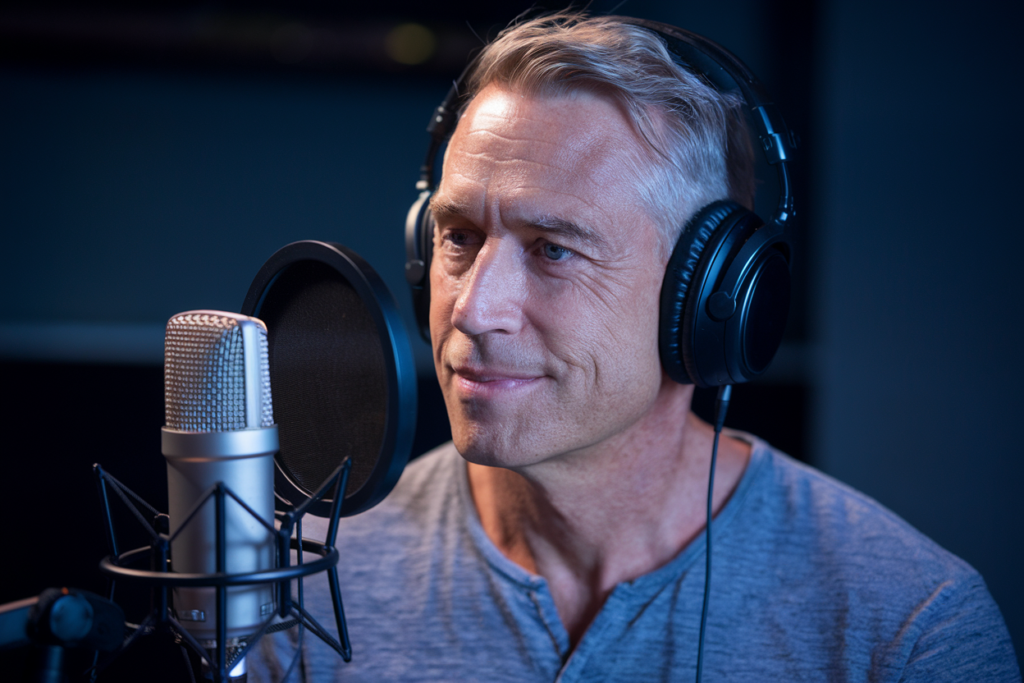When it comes to voiceovers, accents can make a world of difference. The General American accent is often seen as the standard in media, offering clarity and neutrality that appeals to a wide audience. In contrast, the New York accent brings a vibrant energy and authenticity that can instantly evoke a sense of place and character.
Understanding these differences is crucial for anyone in the voiceover industry or looking to enhance their own projects. Whether you’re producing an ad campaign or narrating an audiobook, knowing when to use each accent can elevate your work and connect with your audience on a deeper level. Dive into the nuances of these two distinct accents and discover how they shape storytelling in unique ways.
Key Takeaways
- Accent Significance: Accents in voiceovers, such as General American and New York, greatly influence audience perception and engagement.
- General American Accent: Known for its clarity and neutrality, this accent is ideal for a wide range of media including commercials, narration, and corporate videos.
- New York Accent Characteristics: Offers distinctive phonetic features like unique vowel sounds and lively intonation, making it suitable for character-driven projects that resonate with urban culture.
- Audience Connection: The choice of accent affects how audiences relate to the content; a General American accent appeals broadly while a New York accent evokes authenticity in metropolitan settings.
- Best Practices for Voice Talent: Effective training, vocal techniques, and understanding audience preferences are essential for selecting the right accent to enhance project outcomes.
Overview of Voiceover Accents
Accents play a crucial role in voiceovers, shaping the listener’s experience and perception. The General American accent stands out for its clarity and neutrality. This accent is commonly used in various media formats, making it accessible to a broad audience. Its standardization allows for clear communication without regional bias, which suits diverse projects seeking a polished sound.
The New York accent offers a different appeal with its vibrant energy and distinct character. Known for its unique pronunciation and rhythm, this accent adds authenticity to performances. It resonates well with audiences familiar with urban culture or narratives set in metropolitan environments.
Understanding these accents is vital for anyone engaging voice talent. Choosing the right accent enhances storytelling and fosters emotional connections with listeners. Whether you’re selecting a voice artist for an advertisement, narration, or character work, recognizing how accents influence delivery can significantly impact your project’s success.
Characteristics of General American Accent
The General American accent serves as a standard in voiceovers, marked by its clarity and neutrality. This accent is widely understood across the United States, making it ideal for various projects that require broad audience appeal.
Phonetic Features
- Vowel Sounds: The General American accent features distinct vowel sounds like /æ/ in “cat” and /ɑ/ in “father,” which differ from other regional accents.
- R-Colored Vowels: The pronunciation of ‘r’ is prominent, with no dropping or softening. For instance, words like “car” and “hard” maintain their ‘r’ sound clearly.
- Flapping: In conversational speech, the /t/ and /d/ sounds often become flapped between vowels, resulting in pronunciations like “butter” sounding more like “budder.”
- Intonation Patterns: Speech typically has a flat intonation pattern that conveys neutrality without emphasizing emotional peaks found in other accents.
Common Usage
The General American accent appears frequently in professional voiceovers due to its versatility. It’s commonly used for:
- Commercials: Advertisements utilize this accent to reach diverse audiences without regional bias.
- Narration: Documentaries and educational materials benefit from the clear delivery associated with the General American accent.
- Corporate Videos: Training videos often feature this accent to ensure comprehension among employees from various backgrounds.
- Audiobooks: Many audiobooks employ voice artists using the General American accent to provide an engaging listening experience that appeals universally.
Understanding these characteristics enhances your ability to select suitable voice talent for your projects, ensuring effective communication with your target audience.
Characteristics of New York Accent
The New York accent stands out for its distinctive features and cultural resonance. Understanding these characteristics can help you select the right voice talent for projects that require authenticity.
Phonetic Features
- Vowel Sounds: The New York accent exhibits unique vowel pronunciations, such as the raised “aw” sound in words like “coffee” and “talk.”
- Dropped ‘R’ Sounds: Many speakers drop the ‘r’ at the end of words or before consonants, resulting in pronunciations like “cah” instead of “car.”
- Intonation Patterns: The intonation often carries a lively rhythm, with emphatic stresses on certain syllables that convey energy.
- Diphthongs: The use of diphthongs—two adjacent vowel sounds within the same syllable—adds a distinct quality to many words.
- Th Sound Substitution: Speakers may replace the ‘th’ sound with ‘d’ or ‘t,’ leading to pronunciations like “dis” for “this.”
- Urban Identity: The New York accent reflects a vibrant urban culture, making it ideal for character-driven projects that resonate with city life.
- Authenticity in Storytelling: Using a New York accent adds authenticity to narratives set in metropolitan areas, enhancing emotional connection through relatable speech patterns.
- Diversity Representation: This accent encompasses various ethnic backgrounds, showcasing cultural richness and diversity in voiceover work.
- Media Influence: Iconic characters from film and television often embody this accent, influencing public perceptions and expectations in media projects.
Selecting a voice artist who embodies these characteristics enhances your project’s narrative depth and audience engagement through authentic representation of urban culture.
Comparison of General American and New York Accent in Voiceovers
Understanding the differences between the General American accent and the New York accent is essential for selecting the right voice talent for your projects.
Audience Perception
Audience perception varies significantly between these two accents. The General American accent is often perceived as neutral and professional, appealing to a wide audience. This quality makes it ideal for corporate videos, narration, and audiobooks. In contrast, the New York accent resonates with urban audiences, evoking feelings of authenticity and vibrancy. It connects well with characters or narratives rooted in metropolitan environments. Recognizing how your target audience perceives each accent can enhance engagement and relatability in your voiceover projects.
Impact on Voiceover Projects
The choice of accent directly impacts voiceover projects’ tone and effectiveness. A voice actor using a General American accent delivers clarity that suits informative content like commercials or educational materials. This clarity fosters comprehension across diverse demographics. Alternatively, a voice artist employing a New York accent injects energy and personality into scripts, making them ideal for storytelling that requires an urban flair. Depending on project needs—whether aiming for neutrality or vibrant character—you can leverage these accents to achieve desired emotional responses from listeners, ultimately enhancing project success.
Best Practices for Voiceover Artists
Understanding the nuances of voiceovers significantly enhances project outcomes. Effective techniques and training play crucial roles in developing your skills as a voice artist.
Training and Techniques
Investing in vocal training improves clarity and delivery. Practicing breathing exercises strengthens lung capacity, allowing longer phrases without interruption. Working on diction ensures precise pronunciation, vital for accent clarity. Recording practice sessions helps identify strengths and areas needing refinement. Employing techniques such as emotional interpretation adds depth to performances, making them more engaging.
Additionally, exploring various genres—commercials, narration, animation—expands versatility as a voice actor. This exposure allows you to adapt styles based on project requirements effectively.
Choosing the Right Accent
Selecting an appropriate accent elevates the overall impact of your voiceover work. The General American accent offers neutrality, ideal for corporate or educational content where clarity is essential. In contrast, the New York accent infuses energy and authenticity into urban narratives.
Consider your target audience when choosing an accent; understanding their preferences shapes how they perceive your message. Researching successful projects within specific demographics provides insight into what resonates best with listeners.
Ultimately, mastering these practices enables you to deliver compelling performances that meet diverse client needs while maintaining professionalism across all aspects of voice over talent selection.
Conclusion
Understanding the nuances between General American and New York accents can significantly enhance your voiceover projects. Each accent serves a unique purpose and resonates differently with audiences. Choosing the right one isn’t just about personal preference; it’s about aligning with your project’s goals and audience expectations.
By mastering these accents and implementing effective techniques, you can elevate your storytelling. Whether you’re aiming for clarity with a General American accent or seeking to infuse energy with a New York accent, knowing how to leverage each will make your voiceovers more impactful. Your ability to adapt will not only broaden your appeal but also ensure that you connect meaningfully with listeners across various platforms.
Frequently Asked Questions
What is the General American accent?
The General American accent is characterized by its clarity and neutrality, making it suitable for a wide range of voiceover projects. It features distinct vowel sounds, prominent ‘r’ pronunciation, and a flat intonation pattern. This accent is commonly used in commercials, narration, corporate videos, and audiobooks to enhance comprehension.
Why is the New York accent important in voiceovers?
The New York accent adds vibrancy and authenticity to voiceover work. Its unique phonetic features resonate with urban culture and narratives set in city environments. This accent enhances storytelling by injecting energy into scripts and reflecting cultural diversity.
How do accents impact audience perception in media?
Accents significantly influence how audiences perceive messages. The General American accent is seen as neutral and professional, ideal for educational content, while the New York accent conveys energy and authenticity that resonates with urban audiences. Choosing the right accent can enhance project effectiveness.
What are best practices for voiceover artists?
Voiceover artists should focus on vocal training techniques such as breathing exercises for lung capacity and diction practice for clear pronunciation. It’s essential to explore various genres to improve versatility. Understanding the target audience’s preferences helps shape message delivery effectively.
Why should I consider vocal training as a voiceover artist?
Vocal training improves your skills by enhancing lung capacity, diction, and overall performance quality. Regular practice allows you to self-assess your progress, ensuring you deliver compelling performances tailored to diverse client needs while maintaining professionalism in your work.






